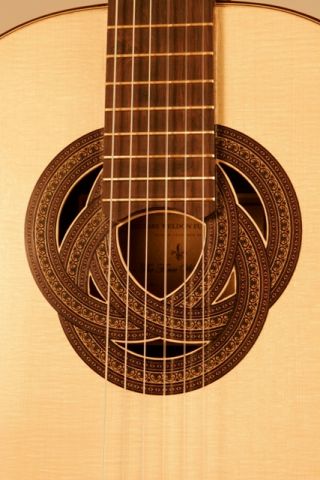Though I am strictly, and passionately, a classical/flamenco builder, I strive to interpret this instrument with a contemporary twist, marrying modern artistic sensibilities with a classical voice. I'm not a purist, I'm an artist.
My most recent project I submit for this forum's constructive critique. This guitar is made from a stunning back and side set of Tasmanian Tiger Myrtle that I obtained from Stephen at http://www.colonialtonewoods.com In fact, when this wood set arrived, I was so pleased that I immediately arranged for another set and was lucky enough to obtain the sister set from the same flitch. Stephen has some of the most amazing wood in the world and all my beer money and all my gratitude go to him. Trust me, his wood offerings are unparallelled.
The guitar I present today is paired with a master grade German Spruce top (LMI), braced with a hybrid Robert O'Brien/Antonio Torres pattern, and it sounds quite promising. It appears to be quite loud and fast in response at the present. Headplate and elyptical rosette are bookmatched (but not a true match) Tasmanian Tiger Myrtle, African ebony bindings, Honduran Mahogany neck, African Blackwood fretboard and bridge, Gotoh Premium Classical Tuners. I've used reverse mahogany kerfing top and back, mahogany back bracing, German spruce top bracing throughout the top. Incidentally, this is guitar #6 for me if you are interested.
In the coming weeks, a French polish will be carefully administered and then the final test... set-up and strings. Until then... let me know what you think! Incidentally, she's a keeper- not for sale. More pics to follow when the finish is on. Thanks for considering this one!












